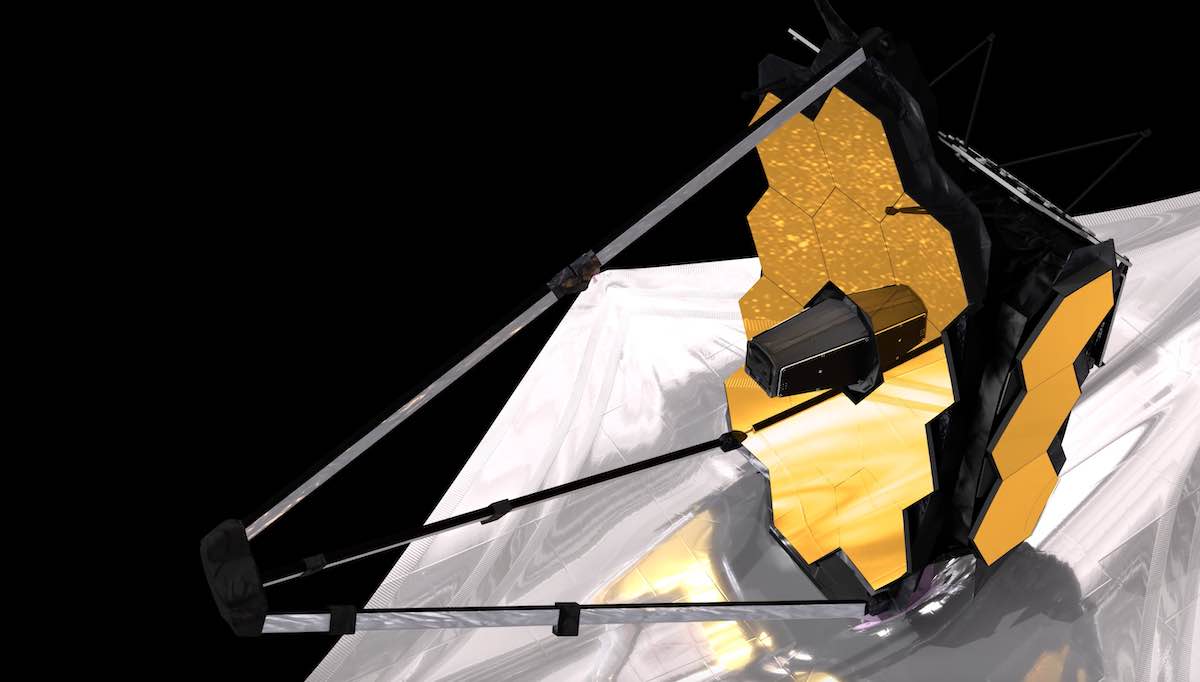
In another major milestone for the James Webb Space Telescope, a motor-driven tripod unfolded as planned Wednesday, moving a 2.4-foot-wide secondary mirror into position to reflect collected starlight back down to the instruments that will study it.
While the deployment of a tennis court-size sunshield Monday and Tuesday marked the most technically challenging hurdle for Webb’s initial activation, getting the secondary mirror in position was equally critical to the success of the $10 billion mission.
To fit inside the nose cone of its European Space Agency-supplied Ariane 5 rocket, the secondary mirror assembly, made up of three 25-foot-long struts, had to be folded up. On Wednesday, commands were sent to unlatch the hinged legs of the tripod so a motor could drive them open.
To the relief of the mission operations team at the Space Telescope Science Institute in Baltimore, the 11-minute procedure went off without a hitch.
“Another banner day for JWST, in particular the secondary mirror deployment folks, you guys did a heck of a job. This is unbelievable,” NASA Project Manager Bill Ochs told the mission operations team.
“We are now at a point where we’re about 600,000 miles from Earth, and we actually have a telescope. So congratulations to everybody.”
Since launch Christmas day, engineers have successfully carried out a string of crucial steps, deploying the telescope’s main antenna, radiators and the sunshield needed to cool the mirrors and instruments enough to register the faint infrared light from the first stars and galaxies.
That set the stage for deployment of the observatory’s optical elements.
The Webb telescope’s secondary mirror is confirmed deployed & latched.
“Another banner day for JWST,” says Bill Ochs, NASA’s Webb project manager. “We’re about 600,000 miles from Earth, and we actually have a telescope. So congratulations to everybody.”https://t.co/phLEclX8tM pic.twitter.com/efkd08A9zO
— Spaceflight Now (@SpaceflightNow) January 5, 2022
Webb will capture light from its myriad targets with a 21.3-foot-wide primary mirror, the largest ever launched into space. Light hitting the segmented primary will bounce up to the 2.4-foot-wide secondary mirror deployed Wednesday and then back down to a third, slightly offset mirror positioned behind the primary.
That tertiary mirror will bounce light up to a computer-controlled “steering mirror,” which can automatically fine-tune its orientation to counteract vibrations in the telescope’s structure that might otherwise affect the light beam. The corrected light then will be directed to Webb’s four science instruments.
With the secondary mirror now deployed, the operations team will turn its attention to unfolding two “wings” to either side of the primary that were folded out of the way for launch. Each wing holds three of the mirror’s 18 segments and both must be extended and locked in place to achieve the required sensitivity.
If all goes well, both wings will be in place by the end of the week or shortly thereafter. After that, scientists and engineers will begin a long process to precisely align each segment, merging the light from each one to achieve a single, razor-sharp focus.
from Spaceflight Now https://ift.tt/3zy48h1
via World Space Info







0 comments:
Post a Comment